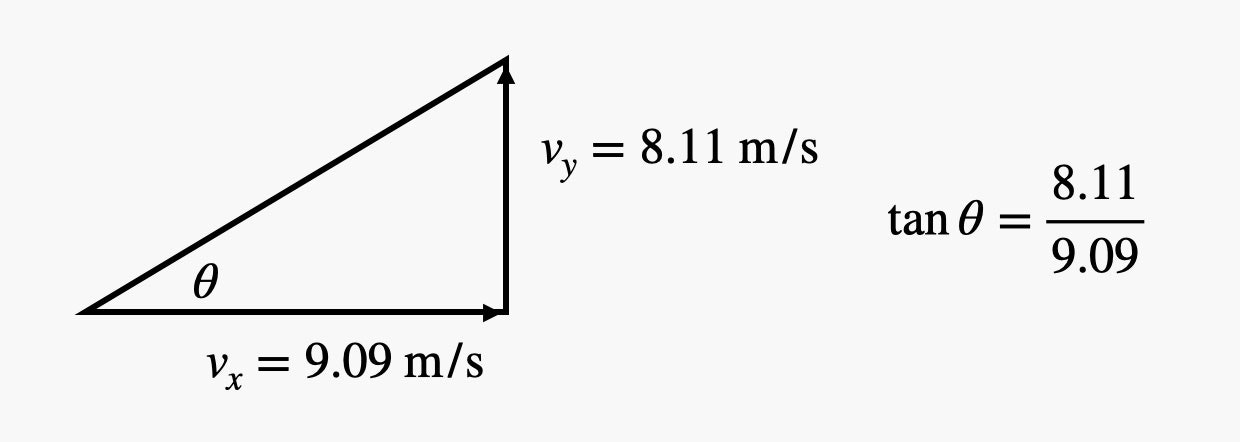In this equation, y1 is the starting position and y2 is the final position. Let’s set the final position to 0 meters so that the starting position would be 3 meters. The initial velocity (vy1) is going to be the value of 8.11 meters per second, and g is the gravitational field (9.8 N/kg = 9.8 meters per second2). The only thing I don’t know is the time (t).
It takes a little bit of work to solve this, using the quadratic equation. Doing so gives a flight time of 1.10 seconds. Notice that this is indeed a shorter time interval than the value from the clip (3.84 seconds). I think this interval is more legitimate.
Now we can look at the horizontal motion of the lightsaber. In this case, the lightsaber is a simple projectile. Since there are no forces acting on it in the horizontal direction, it travels with a constant horizontal velocity. That means that if we know the horizontal distance between Luke and R2, we can calculate the horizontal velocity just by dividing this distance by the flight time (1.10 seconds). Let’s say that it’s 10 meters from the sail barge to the skiff. This would give the lightsaber a horizontal velocity of 9.09 m/s.
Knowing both the horizontal and vertical velocity at the launch, we can find the launch angle of the lightsaber. (This is something that R2 would have to calculate.)
Illustration: Rhett Allain
Plugging in the numbers, this gives a launch angle of 41.7 degrees above the horizontal. That seems like a pretty reasonable shot—but it still feels like R2 launches it at a higher angle (like 70 degrees) to give Luke more time to get into position.
(Let’s be honest: When they made this scene, they likely broke the lightsaber motion into two parts. The first shot shows the launch of the lightsaber as it went up into the air and then just landed somewhere. The second part was probably filmed as someone dropped the lightsaber into Luke’s hand.)
Luke’s Plank Jump and Flip
Now let’s move on to Luke’s maneuver. We can also break this into two parts. In the first one, Luke steps off the plank while turning around. He starts to fall, then grabs the edge of the plank when he’s at arms length below it. He uses the springiness in the board, along with his own muscles, to launch himself to an even higher position. In the second part of the move, he does a front flip back onto the skiff so he can be in position to catch his lightsaber.
Let’s focus on that plank-grab move. I can illustrate this motion at three different points—start, grab, flip.



